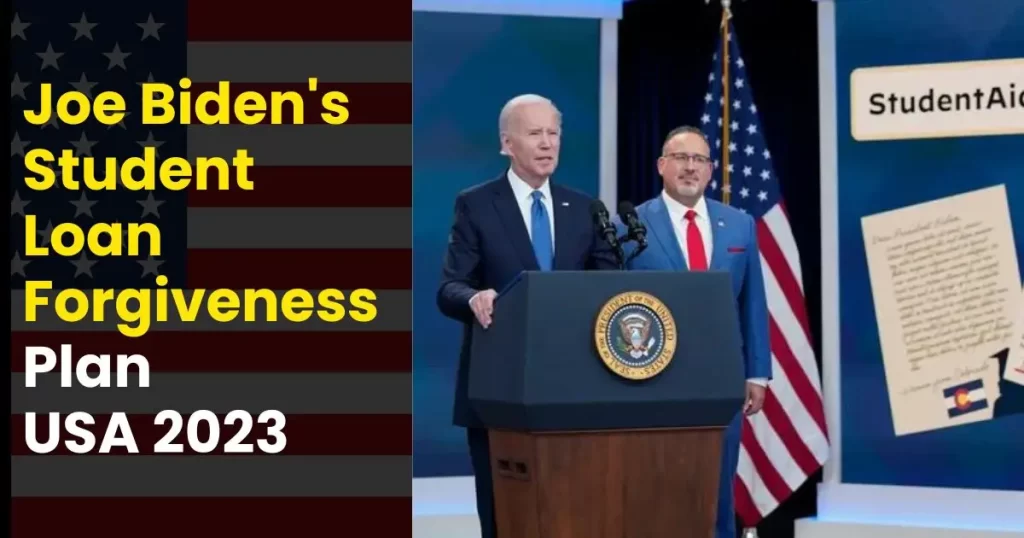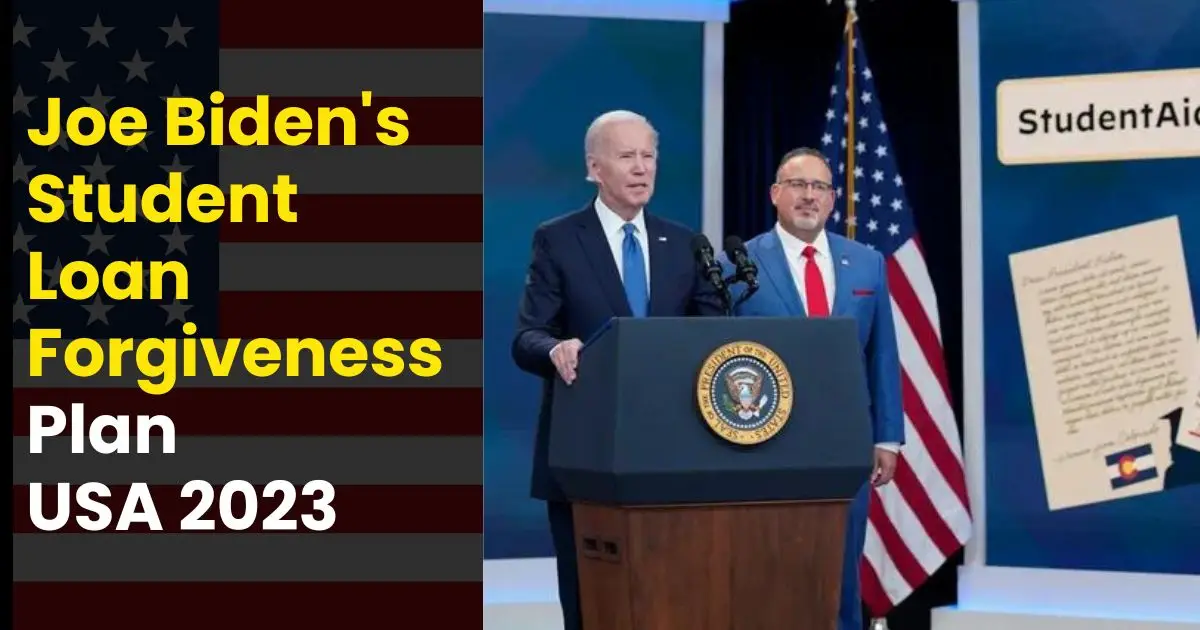Student loan debt can be a significant burden for many people, but there are options for loan forgiveness that can help ease the financial strain. In this article, we will explore the different types of Student loan Forgiveness programs including Joe Biden’s Student Loan Forgiveness Plan 2023. I this Article we are also going to provide tips for managing debt while participating in a Loan Forgiveness Program.
Introduction to Student loan Forgiveness
Student loan forgiveness is a program that allows borrowers to have some or all of their federal student loans forgiven, meaning they no longer have to make payments on those loans. This can be an excellent way to reduce the financial burden of student loan debt.
There are several types of student loan forgiveness programs, including Public Service Loan Forgiveness, Teacher Loan Forgiveness, and Perkins Loan Forgiveness. Each program has its own eligibility requirements, so it’s essential to do your research to find out which ones you qualify for.

Public Service Loan Forgiveness
Public Service Loan Forgiveness is a program that forgives the remaining balance on eligible Direct Loans after 120 qualifying payments have been made while working full-time for a qualifying employer. This program can be an excellent option for those who work in public service, such as Government organization or non-profit organizations.
To qualify, you must work full-time for a qualifying employer, which includes federal, state, or local government organizations, not-for-profit organizations, and some private not-for-profit organizations. Additionally, your loans must be Direct Loans, which are loans from the federal government.
YOU MIGHT ALSO LIKE : Top 100 Most Prestigious Universities in the US 2023
Teacher Loan Forgiveness
Teacher Loan Forgiveness is a program that forgives up to $17,500 of your Direct Subsidized and Unsubsidized Loans and your Subsidized and Unsubsidized Federal Stafford Loans if you teach full-time for five complete and consecutive academic years in a low-income school or educational service agency.
To be eligible, you must have been employed as a full-time teacher for five complete and consecutive academic years, and at least one of those years must have been after the 1997-98 academic year. You must also have Direct Loans or Federal Family Education Loan (FFEL) Program loans that are not in default.
Perkins Loan Forgiveness
Perkins Loan Forgiveness is a program that cancels up to 100% of a borrower’s Federal Perkins Loans if they work in certain public service jobs, such as law enforcement, nursing, or teaching.
To be eligible, you must have worked full-time in a public service job for at least one year after the completion of your academic program. Additionally, your Perkins Loan must have been disbursed on or after July 1, 1993.
Potential Impact on Credit Score
Participating in a student loan forgiveness program can have an impact on your credit score, but it’s not necessarily negative. As long as you make your payments on time and fulfill the program requirements, it can actually improve your credit score by reducing your debt-to-income ratio.
However, it’s important to note that loan forgiveness may be considered taxable income, which could increase your Tax liability.
How to apply for student loan forgiveness programs ?
There are many resources and tools available to help you find and apply for student loan forgiveness programs. The Federal Student Aid website is an excellent place to start, as it provides information on all federal student loan forgiveness programs. You can also contact your loan servicer for more information on specific programs and eligibility requirements.
Eligibility for Biden’s Student Loan Forgiveness Program

Borrowers who earn less than $125,000 annually may also be eligible for debt relief under President Joe Biden’s plan to forgive or reduce student loan debt for millions of debt-saddled borrowers. The plan includes a one-time maximum debt forgiveness of $10,000 per borrower and up to $20,000 for those who received a Pell Grant.
YOU MIGHT ALSO LIKE : 15 Creative ways to Make Money with ChatGPT 2023
What is Pell Grant ?
A Pell Grant is federal funding that’s usually awarded only to students who display exceptional financial need and have not earned a bachelor’s, graduate or professional degree. Unlike a loan, a Pell Grant does not have to be repaid, except under certain circumstances.
However, it’s important to note that not all borrowers will qualify for these federal loan forgiveness programs. This is why it’s crucial to do your research and explore all of your options, including income-driven repayment plans and refinancing.
Refinancing & Income-driven repayment plans
Income-driven repayment plans are designed to help borrowers with lower incomes by capping their monthly loan payments at a percentage of their income. These plans can be a great option for those who don’t qualify for loan forgiveness programs, but still need some relief from their monthly payments.
Refinancing is another option that can help borrowers lower their monthly payments and interest rates. This involves taking out a new loan with a private lender to pay off your existing student loans. However, it’s important to weigh the benefits and drawbacks of refinancing before making a decision, as it can potentially increase the total amount of interest you’ll pay over the life of the loan.
Important Factors to Consider while Participate in Student Loan Forgiveness Program
If you’re considering participating in a student loan forgiveness program, it’s crucial to understand the potential impact it could have on your credit score. While participating in a forgiveness program can improve your credit score by reducing your debt-to-income ratio, it can also have a negative impact if you miss payments or fail to meet the program requirements.
It’s also important to note that the Biden administration’s plan for student loan forgiveness is not yet guaranteed, and the details are subject to change. As of now, only borrowers who make less than $125,000 annually are eligible for forgiveness or reduction of up to $10,000 in federal student loans. Borrowers who received a Pell Grant may be eligible for up to $20,000 in forgiveness.
It’s important to note that not all student loan forgiveness programs are created equal, and some may have more stringent requirements than others. For example, the Public Service Loan Forgiveness program requires borrowers to work full-time for a qualifying employer for 120 qualifying payments before their loans can be forgiven. This can take up to 10 years to accomplish, so it’s essential to consider the time commitment required before enrolling in a forgiveness program.
Another important factor to consider when participating in a forgiveness program is the impact it may have on your taxes. Forgiven loans may be considered taxable income, which means you may owe taxes on the amount forgiven. However, there are certain circumstances in which forgiven loans may not be taxable, such as if you work for a non-profit organization or are eligible for disability discharge.
If you’re struggling with student loan debt and are considering enrolling in a forgiveness program, there are several steps you can take to manage your debt while you work towards loan forgiveness. One of the most important things you can do is create a budget and stick to it. This can help you avoid unnecessary expenses and ensure that you have enough money to cover your loan payments.
Another helpful strategy is to look into income-driven repayment plans. These plans adjust your monthly loan payments based on your income and family size, which can help make your payments more manageable. Income-driven repayment plans can also help you qualify for loan forgiveness programs, as some forgiveness programs require borrowers to be enrolled in an income-driven repayment plan.
Conclusion
In conclusion, Student loan forgiveness programs can be a valuable tool for those struggling with student loan debt. By understanding the different types of forgiveness programs available and their eligibility requirements, you can take control of your debt and improve your financial situation.
It’s important to do your research and consider the time commitment required before enrolling in a forgiveness program, and to take steps to manage your debt in the meantime, such as creating a budget and enrolling in an income-driven repayment plan. With these strategies in place, you can take steps towards a more financially secure future.

